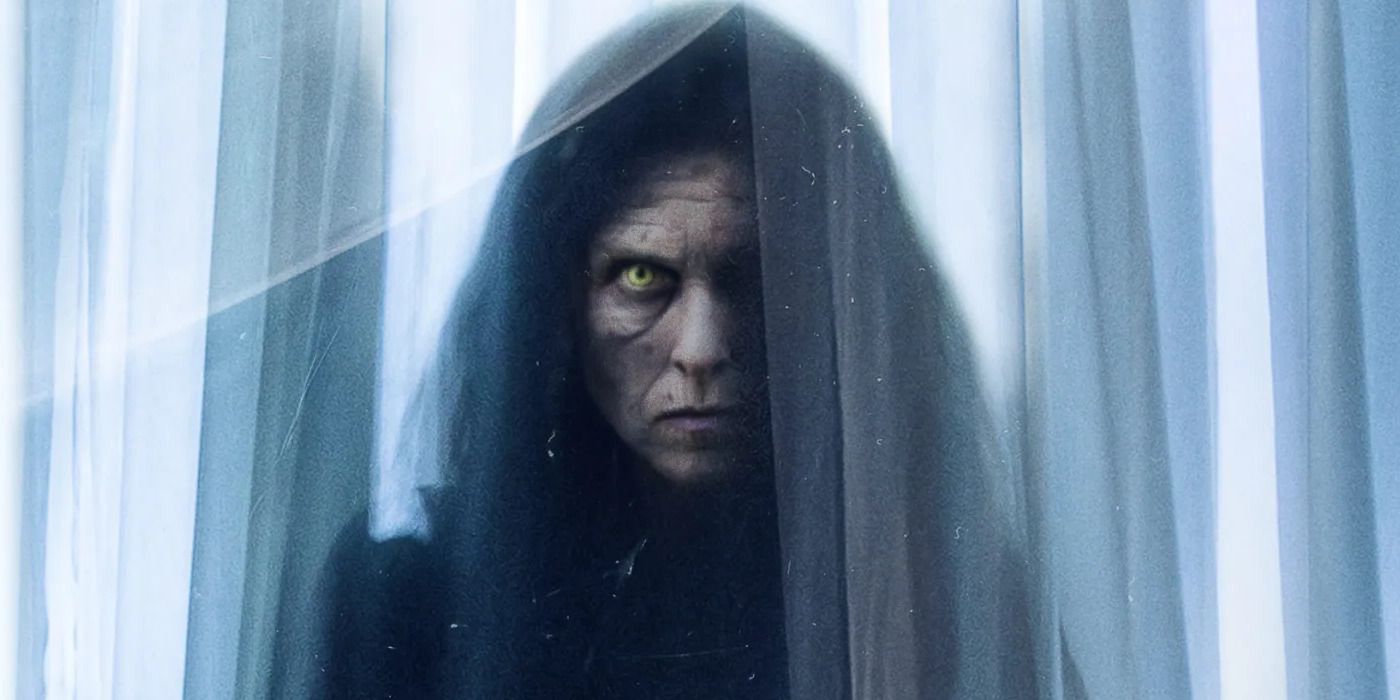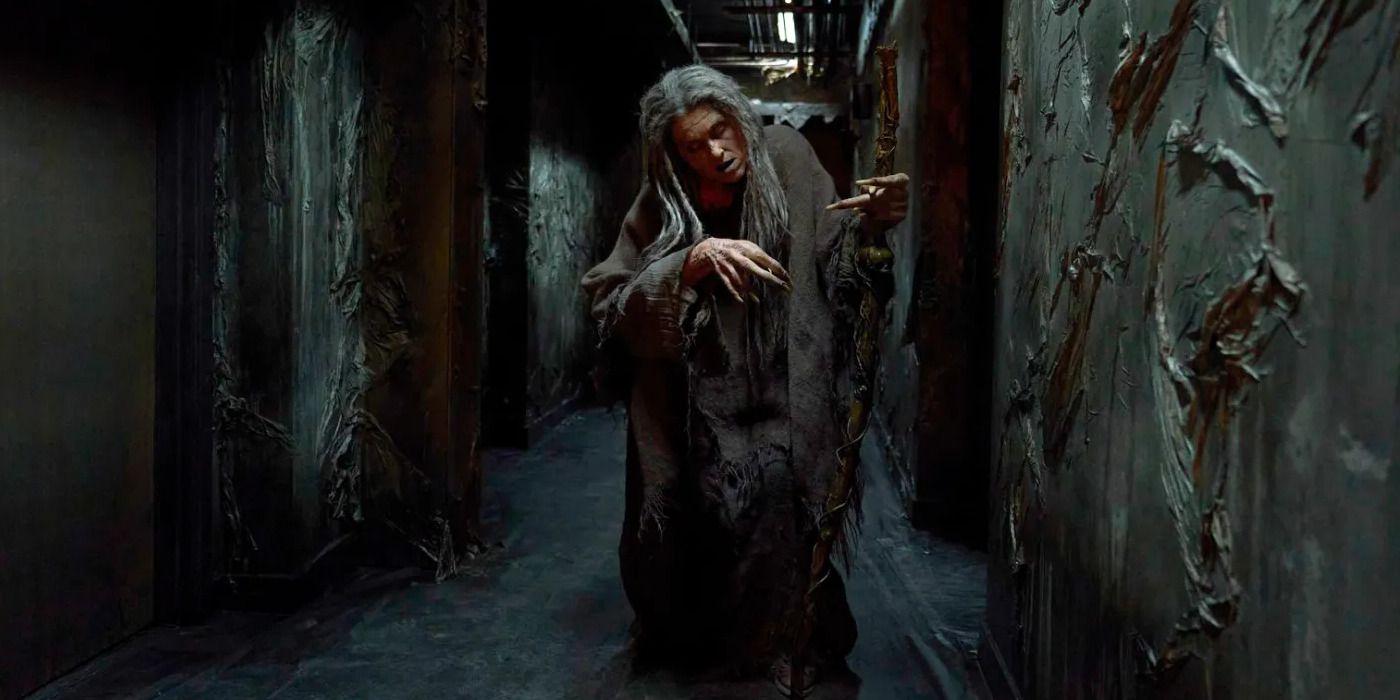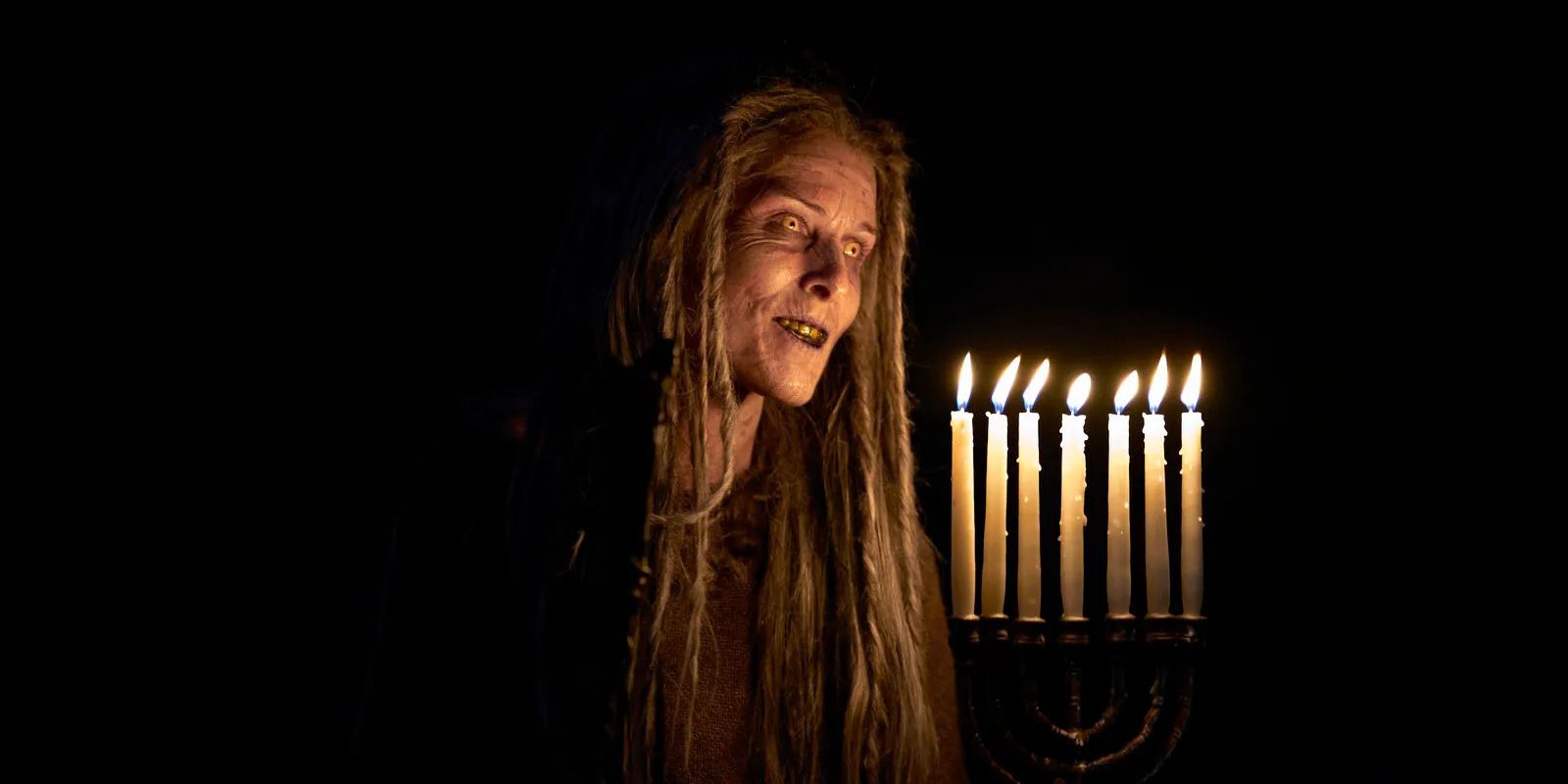Filmmaker John R. Leonetti has been steadily working in Hollywood as a director and cinematographer for decades, including a longstanding partnership with influential horror filmmaker James Wan. After helming 2014's Annabelle and 2019's The Silence, Leonetti turns to a more ancient and maternal scary story in Lullaby, which follows a young couple terrorized by a demon targeting their baby. Inspired by Jewish mythology, Leonetti turned to conventional, in-camera filmmaking techniques to deliver a more authentic and practically-driven horror movie with supernatural scares and visceral thrills.
In an exclusive interview with CBR, Leonetti shared the behind-the-scenes secrets he used in Lullaby to ratchet up the terror. He revealed what attracted him to the project and teased what audiences can expect when Lullaby is released in theaters and on demand this December.
CBR: John, what was it about Lullaby and Alex Greenfield and Ben Powell's script that made you want to direct this film?
John R. Leonetti: I was working on another project with Alcon Entertainment, and Lee [Nelson] and David [Tish], the producers on this, sent it to me through one of my managers. There were two things about it that I loved. It's supernatural horror, but it's not Judeo-Christian. It's ancient Hebrew. I thought that was really interesting and different. I also love the character of Lilith, and I didn't know shit about her until I read it and started researching her. She was the first wife of Adam before Eve and not of his rib but equal to him. That's not in the Torah but the Talmud, their mythology. I thought [it was] a neat idea and way to tell a horror movie story that touches on some things people are familiar with and can relate to.
The other thing that I love is the whole thing about a lullaby. Lullabies seemingly are lulling. You sing them to kids to go to sleep, but they're all fucking dark. The moment I read the script, I thought it'd be great to have a title sequence where you show clips and images of these different lullabies and show how gnarly they are. In the opening sequence, that's intermingled in there, and I think it's cool!
At the risk of getting Freudian, you come from one of the biggest movie lighting families in Hollywood, and yet a lot of your films, including this one, are shrouded in darkness. How do you approach playing with light and darkness to instill tension and terror?
I think that everybody who likes horror, and even those who don't, question what's on the other side, but nobody really knows. I think darkness creates a vibration maybe that allows people's minds, souls, or spirits to wander. If you take it back a step from darkness to reality, from the other side to what's real, as soon as I started working with James Wan as a cinematographer, he and I on the first Insidious really honed the way with light to make it very real. Sure, there's bright, and there's dark, but so many movies, even some horror movies, are overlit. There's gloss and all that bullshit. The more realistic something is when the audience is viewing it, the more believable it is. The more believable it is, the more you can get under their skin.
There is an underlying theme about the distortion of reality, and I feel like there's a mirror somewhere on virtually every set. What was it about having that distortion theme and mirrors as portals to another world?
It's funny. You're aware I'm from a lighting family since my dad, who was the gaffer of Singin' in the Rain and an electrician on The Wizard of Oz. Before I became a prominent cinematographer, I worked with my dad and these older guys with a company called Introvision, and they did a scene with this process right before bluescreen and greenscreen was really created.
In Stand By Me, there's a scene with the kids on the railroad tracks, and the train comes at them. They used a double-screen projection. It was done in-camera the way they did that. It's working with mirrors and splitters, and it's called ghost glass. I've done a lot of work with that way back when. I'm actually kind of an expert on that shit. Behind the mantle in the house and in the hallway [in Lullaby], I had a big black room. We would just balance the light to put the Crone back there, and to me, what's awesome about that is that it just feels more real, and I think it's scarier.
You talked about the appeal of Lilith. How was it working out the creature design for the movie?
It was super fun! Lilith is beautiful. I didn't want her to be a monster. Now, her Crone should obviously be creepy as fuck, so there's that, and there are those offspring, the Lilium they're called. Casting Lilith was the hardest thing to do of the whole movie, to find the right person. Kira [Guloien] is from Toronto. That's where we did the movie, and she's a triple threat. She acts, she sings, she dances, and she's just got this striking beauty, yet her jaw is so cut that there's this side to her that could be creepy. I'm not saying she's creepy in person, but she could transform herself to pull off to do what we wanted to do in the movie.
[For] the Crone, we actually almost ended up using Geraldine Chaplin, Oona [Chaplin]'s mother, to play the Crone. Oona's grandfather was Charlie Chaplin, and we thought how fun that would be, and Geraldine wanted to do it. We would've messed her up, of course, but she already has lines on her face from her age, and it's all real and natural. Unfortunately, when COVID hit as we started to do this thing, we didn't feel like we could safely travel with her, so we had to find the right person to be the Crone.
Then it got to a point where there were physical things that needed to be done with the Crone, and Mary Ann [Stevens] is a stunt person. I got the idea to try stunt women and older ones, and [Mary Ann] is not that old, but we obviously took her much deeper with the makeup. I had her and another stunt person, who is older, and she was great. I had them do a video for me. I gave them instruction, and I really wanted to make something out of the staff to create some kind of a physical walk and weirdness. I'll be damned, Mary Ann made this video in her attic, and it was amazing!
Working with Paul Jones, whom I previously worked on with the film The Silence for Netflix, he's phenomenal. He's a creature creator, artist, and does makeup. He's amazing. It was just super fun to combine all those aspects to create those characters. The Lilium, I always wanted them to be believable that they're half-human little babies, but they're creepier than you know what. How we came about with what we did, with the conjoined twins, that's bizarre shit. That was the inspiration for that. The other one, the half-wolf and half-human, was really inspired by the fact that, in the mythology, Lilith was thrown to the wolves and could not have human babies, only have babies with animals. That tweaked her out, the fact that she couldn't have natural kids, and she took the song that Adam used to sing to her and turned it into a lullaby and used it to open portals to steal babies.
Directed by John R. Leonetti, Lullaby opens in theaters and is available digitally on Dec. 16.



